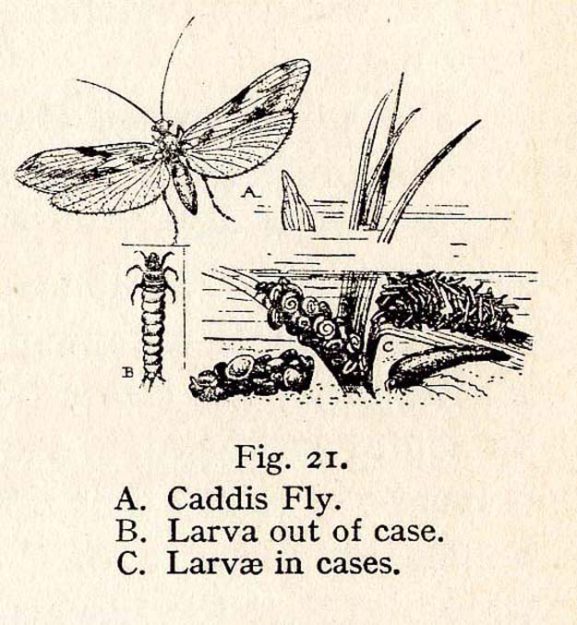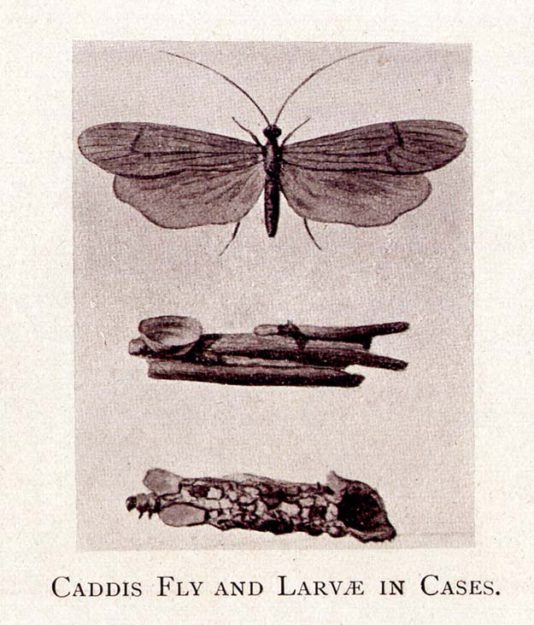Percival W. Westell & Henry E. Turner, The Hedge I know, Londres, J.M. Dent & Company, 1910, pp. 57-59.
Some of the curious little creatures may be seen crawling about the bed of the stream, but let us obtain a specimen and examine it. At length one is secured, but we find that the larva has retired inside the front door of its home, and refuses to come out again, no matter how pressing the invitation may be. See, the case in which the larva is so comfortably housed is made up of pieces of stick, leaves, and other materials, moulded together in a very ingenious way. If we secure another specimen or two, probably on an old stick or log that has been lying in the water for some time, we shall find that there are various kinds of houses built by these creatures.

Here is one, for example, composed of tiny portions of sand, and at one end there is a little shells as if placed there for ornamentation, much after the manner of the porch we build over our own front doors! Other specimens may be met with upon which small shellfish may be found sticking as firmly as glue; these and the owner of the house must needs travel about in company…../…
The small babies stay in this environment some little time before darind to explore the mysteries of the stream, and it almost seems as if the tiny mites realised that, unless some sort of protection were adopted , they would stand very little chance of escaping from numerous enemies. Hence in due time, the larva build the wonderful homes we have seen, and great skill is displayed in fashioning them; inded, it has been found that no matter what material is used, the homes are usually of « the same specific gravity as the water, so that the worms have no difficulty in moving from place to place ». The tiny fragments of sticks, leaves, moss, stones, seeds, rushes, sedges, shells of molluscs, etc., are fastened together by means of a sticky substance which, when exposed, hardens into a kind of silk.

If one tries to dislodge a larva from its home, it will be observed that the creature does not care to be so evicted. It clings tightly to its case, and is aided in this by means of little hooks situate at the end of the body, also by the help afforded by the third pair of legs, and in some species of three small humps.
It is interesting to see the little builder engaged constructing a home, and if one is taken from its shelter and placed in water with suitable building materials, it will construct a new homestead in less time than it takes a human being to make a rough and ready rabbit hutch!